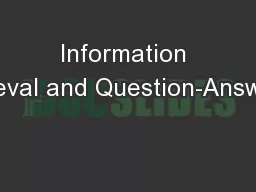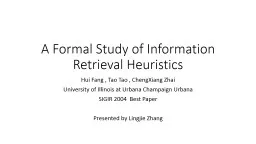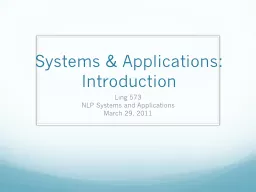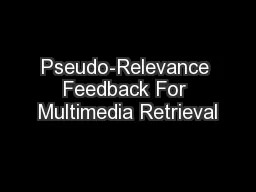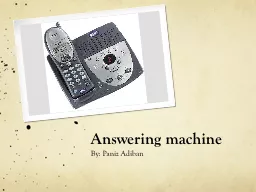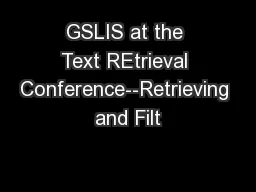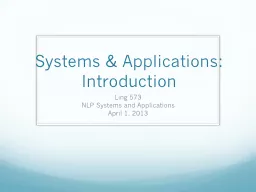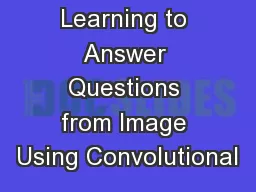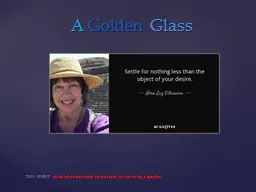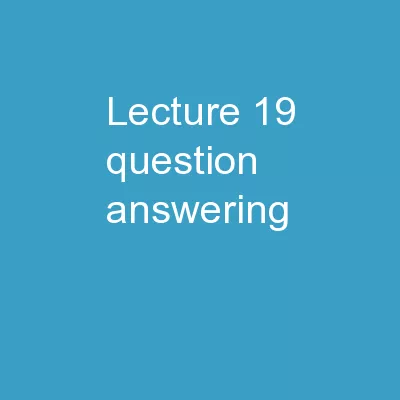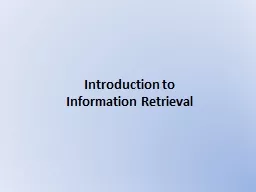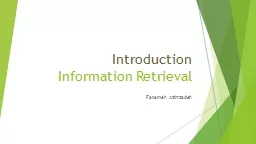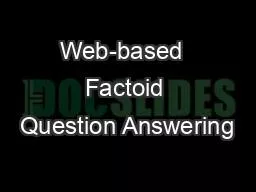PPT-Information Retrieval and Question-Answering
Author : tatyana-admore | Published Date : 2015-09-16
Julia Hirschberg CS 4705 Today Information Retrieval Review of Methods TREC IR Tracks Question Answering Factoid QA A Sample System UT Dallas Harabagiu A simpler
Presentation Embed Code
Download Presentation
Download Presentation The PPT/PDF document "Information Retrieval and Question-Answe..." is the property of its rightful owner. Permission is granted to download and print the materials on this website for personal, non-commercial use only, and to display it on your personal computer provided you do not modify the materials and that you retain all copyright notices contained in the materials. By downloading content from our website, you accept the terms of this agreement.
Information Retrieval and Question-Answering: Transcript
Download Rules Of Document
"Information Retrieval and Question-Answering"The content belongs to its owner. You may download and print it for personal use, without modification, and keep all copyright notices. By downloading, you agree to these terms.
Related Documents

